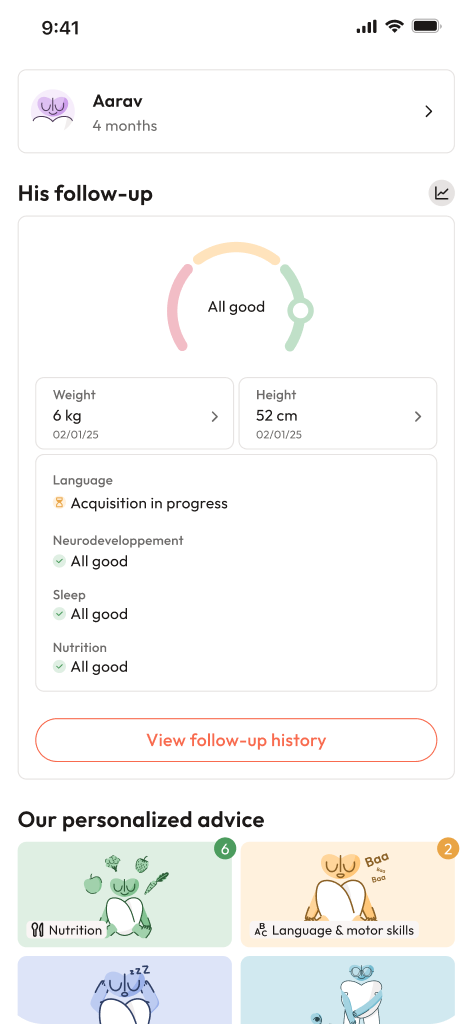Stepping into the world of parenthood ignites a cascade of hopes, a whirlwind of questions—and at times, a current of anxiety sweeping through even the most composed minds. The mere word “Pregnancy” carries weight: excitement for the promise of new life, and a quiet apprehension about the journey ahead. What is Prenatal care? Should one rush to the doctor at the very first suspicion of pregnancy, or is it acceptable to wait a bit? And what actually happens behind those clinic doors, during each scheduled visit? For many, the uncertainty can make even ordinary decisions feel monumental. You might wonder about which vitamins genuinely matter, what tests are essential, how often to expect check-ups, and how to sift through warnings without feeling overwhelmed. Questions about ultrasound timing, nutrition, common discomforts, and monitoring your baby’s well-being come with the territory. Clarity can transform worry into confidence—so, let’s break down what Prenatal care truly means, demystify appointment routines, interpret medical jargon, and equip you with practical strategies, all while upholding your own choices and preferences with respect.
Understanding prenatal care: meaning, timing, and impact
Prenatal care goes far beyond the customary image of weighing scales and prescription pads. Imagine it as an interactive safety net—those regular visits are opportunities to ensure both mother and baby’s health stay on the right track, questions are addressed, and risks are managed with foresight rather than surprise. From confirming the pregnancy with a simple exam or an ultrasound, to charting the baby’s growth and your own wellbeing, every visit forms a link in a chain of assurance.
Early Prenatal care means risk factors such as high blood pressure, diabetes, or infections can be identified and tackled before they spiral into larger worries. This proactive approach is why starting Prenatal care promptly is recommended: ideally, as soon as pregnancy is suspected, or even before conception for those planning ahead (what’s known as preconception care). But even if there is a delay in starting, do not hesitate—the benefits of catching up far outweigh pausing any further.
So, how often are these check-ups expected? Common routine follows this rhythm:
- Every 4–6 weeks up to the 32nd week,
- Every 2–3 weeks until 37 weeks,
- Then weekly until delivery.
Yet, the actual schedule might flex a bit—personal health, previous pregnancies, or any medical history will be woven into the plan.
The prenatal team: who does what and how to choose
Your Prenatal care team may include an obstetrician (OB-GYN), a midwife, or a family physician, sometimes working together. Still unsure who is the best fit for your pregnancy? Consider these points:
- OB-GYN: Handles high-risk situations (for instance, prior complications, diabetes, hypertension), adept at both surgical and non-surgical care.
- Midwife: Specialist in physiological (natural) birth, emphasizing emotional and holistic support—especially suitable for low-risk pregnancies.
- Family Physician: Offers continuity of care—if you value a familiar face from prepregnancy through pediatric visits, this is often comforting.
Additionally, supportive roles matter: a doula guides and soothes you through labor, while childbirth educators decode the maze of breastfeeding, pain management, and baby care. Ever heard of group prenatal programs or telehealth consultations? These blended models provide flexibility, peer camaraderie, and medical expertise—especially useful if attending every visit in person is tricky.
Prenatal appointment flow: what to expect each step
The very first visit usually feels like entering a new world: a barrage of questions about your health, previous pregnancies, chronic illnesses, medications, even family genetic conditions. This lays the groundwork for tracing any specific needs you may have. Expect a physical exam, sometimes a dating ultrasound, baseline blood work (such as your blood group, hemoglobin, immunity to certain infections), and counseling on what comes next.
Subsequent visits will almost always include:
- Blood pressure and weight monitoring,
- Checking for protein or sugar in urine (key for early signs of conditions like preeclampsia or gestational diabetes),
- Measuring the abdomen (fundal height) and listening to fetal heart sounds,
- Discussion of symptoms—what’s normal, what should raise an eyebrow,
- Reviewing nutrition, activity, supplements, emotional health, and answering any simmering questions.
Screenings and vaccinations play a substantial role as well. Routine blood tests spot anemia, detect infections such as HIV or hepatitis B, and check for immunity to rubella. Genetic testing and glucose screening are slotted at specific times, based on your week of pregnancy or risk profile.
First, second, and third trimester: what’s unique about each?
- First trimester (up to 13 weeks): Dating scan, initial labs, infectious screening, sometimes genetic counseling, and early guidance on supplements.
- Second trimester (14–27 weeks): Comprehensive ultrasound (anatomy scan), maternal serum screening, glucose tolerance test, and further vaccinations if due.
- Third trimester (28–40 weeks): Monitoring baby’s position, Group B Streptococcus (GBS) screening, repeat bloodwork, and planning for labor—plus, keeping an eye out for any warning signs.
At every step, the overarching aim is early detection of issues, education, and emotional reassurance.
Medical screenings, vaccines, and why they matter
Is every test essential? While some screenings are standard—blood type and Rh factor, anemia checks, certain infections, glucose test—others like advanced genetic screening or amniocentesis are discussed when age, family history, or prior outcomes suggest higher risk.
A particularly strong focus rests on vaccinations. Protecting both mother and developing baby, some shots—like seasonal flu, Tdap (for whooping cough), and where indicated, COVID-19 vaccine—are considered safe and beneficial. Do query your provider if you plan to travel to areas where extra vaccinations may be indicated; avoid live vaccines during pregnancy.
Mindful nutrition, supplements, and safe habits
It’s tempting to believe dietary advice morphs into a tangle of do-this-not-that. But the science is fairly robust:
- Folic acid (400–800 mcg daily) before and during early pregnancy wards off neural tube defects.
- Iron, calcium, vitamin D, iodine—a custom-fit plan, built on your individual needs, will be designed.
- Hydration and balanced meals—with adequate proteins, healthy fats, and complex carbs—trump extreme diets.
Be cautious around herbal supplements—many have scant safety data. Limit caffeine. Avoid alcohol, tobacco, and other substances—there’s clear consensus on their potential harm during these critical months.
Food safety is no less important. Cut back on high-mercury fish, keep away from unpasteurised dairy, and always wash fruits and vegetables well.
Exercise, well-being, and environmental adjustments
Wondering if movement might harm the baby? On the contrary—if the pregnancy is uncomplicated and the doctor has not advised against, moderate exercise (like walking, swimming, or prenatal yoga) bolsters mood, keeps gestational diabetes at bay, preps the body for labor, and aids in return to fitness afterward.
Still, every scenario deserves nuance. Know the “red flags”: vaginal bleeding, sudden swelling, persistent headaches, decreased fetal movement—these deserve immediate attention. Fatigue might be constant; prioritize sleep, gentle routines, ergonomic adjustments at work, and—sometimes—a power nap without guilt.
Mental health? Far from a luxury. Screening tools like the Edinburgh Postnatal Depression Scale (EPDS) or GAD-7 are routinely used. Therapy, support groups, or medication where needed—all are valid pathways.
Fetal monitoring: how your baby’s wellbeing is checked
Fancy terms like cardiotocography (CTG), non-stress test (NST), or biophysical profile are not meant to perplex you. Quite simply, these are methods to track your baby’s heart rate and movements, sometimes before labor, often during.
- Intermittent auscultation uses a handheld Doppler—great for low-risk situations, enabling more freedom of movement.
- Continuous CTG, with belts monitoring heart and contractions, is often reserved for higher-risk cases or certain labor scenarios.
Not all signal changes indicate a problem; what matters is context, and how your provider interprets alongside the bigger clinical picture. Don’t hesitate to ask them to explain what each curve or “blip” means in plain terms.
Antenatal education, digital tools, and family support
Empowerment often springs from education. Childbirth and newborn classes—offline, online, or through apps—demystify the unknowns of lactation, pain management, newborn sleep, and safety. The importance of family involvement cannot be overemphasized. Encourage partners to attend visits, help with decision-making, and plan postpartum support.
Digital technology brings further options: validated apps for kick-counting, blood pressure monitors for home use, teleconsultations for follow-ups, and easy access to educational resources. Reliable digital health tools can complement—not replace—face-to-face consultations.
Respectful, tailored, and inclusive care
One size rarely fits all. Religious, cultural, or personal preferences, disability or different family structures, adolescence, higher or lower BMI—Prenatal care adapts. Compassionate, nonjudgmental support for those with substance use, or those transitioning care mid-pregnancy, is central to promoting safety and respect.
Language access, trauma-informed communication, and advocacy when delays or barriers arise are all part of quality maternity care.
Preparing for birth and postpartum recovery
A flexible birth plan, clarified with your provider, helps manage expectations and transitions. Pain relief options, induction procedures, monitoring preferences, and immediate newborn care (delayed cord clamping, skin-to-skin) should be discussed openly. After the birth, focus shifts to recovery: breastfeeding support, mental health monitoring, pelvic floor rehabilitation, and contraceptive advice. Prepare for your “fourth trimester”—the just-after period—with as much attention as pregnancy itself.
Access, costs, and community resources
Questions about insurance and maternity benefits often surface late, but are best anticipated early. Explore community-supported programs for those uninsured or underinsured. Budgeting realistically for essentials—and seeking local or online resources—is both wise and empowering.
Key Takeaways
- Prenatal care starts best before or immediately after conception is confirmed; don’t delay the first check-up.
- Each visit serves an essential purpose: screening, monitoring, education, reassurance, and planning.
- Emphasize communication—ask freely about tests, warning signs, family involvement, and evolving preferences.
- Medical nutrition, specific vaccines and supplements (like folic acid and iron), and lifestyle modifications are cornerstones for a healthier pregnancy.
- Fetal monitoring (like CTG or NST) helps detect issues early, guiding safer deliveries.
- Emotional and mental health are integral parts of Prenatal care—never hesitate seeking help.
- Preparation for labor, delivery, and postpartum adjustment maximizes safety and confidence.
- Do not hesitate to explore professional help and digital support such as application Heloa for tailored advice and free health assessments for children.
Questions Parents Ask
How will I know when it’s time to go to the hospital or birth centre?
Thinking about when to leave home as labour starts—unsure? Typical cues include: regular, stronger contractions (for many, five minutes apart and lasting a minute, for at least one hour), sudden gush or constant trickle of fluid, heavy vaginal bleeding, severe or constant pain, significant drop in baby’s movements, high fever, or severe headache. If in doubt, call your care team—they can assess over the phone and decide if you should come. Trust your intuition; it’s better to get checked than risk unease.
Which over-the-counter medicines can be considered safe in pregnancy?
Many familiar remedies are safe, but context matters. Acetaminophen (paracetamol) is usually used for pain or fever. Calcium or magnesium antacids often help with heartburn. Loratadine-type antihistamines may ease allergy symptoms. For constipation, fiber supplements or docusate are often used, not harsh laxatives. Morning sickness may respond to vitamin B6 or doxylamine, if prescribed. Always verify with your clinician or pharmacist before starting—dosing and timings require adjustment in pregnancy.
What does a prenatal nurse do, and how do they support between the visits?
Prenatal nurses are often a parent’s first line of contact. They provide information, answer questions, clarify test results, coordinate vaccinations and visits, and can escalate to doctors or midwives if needed. From guiding how to check fetal movements, to supporting with nutrition or mental health referrals, their practical advice smooths out the journey. When in doubt, a quick call to the nursing team can often prevent an unnecessary clinic trip.

Further reading :









